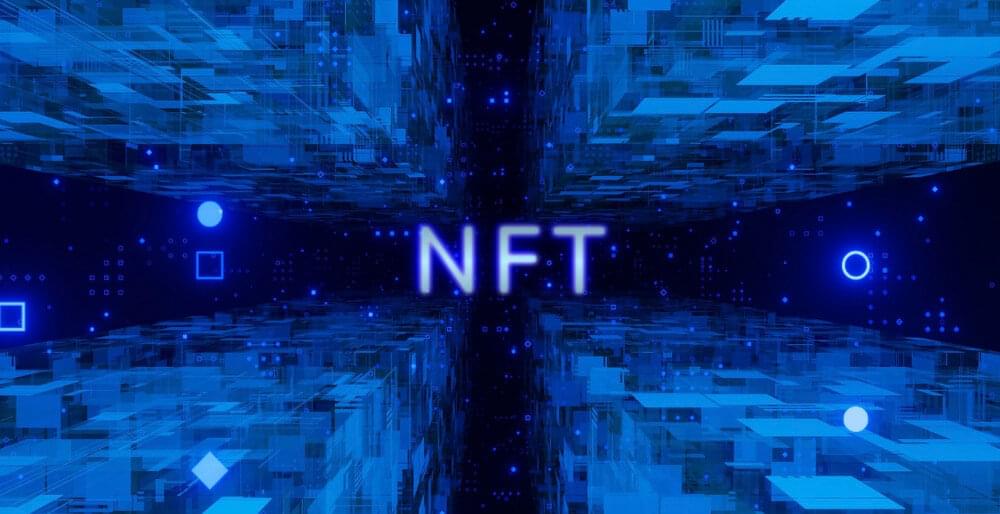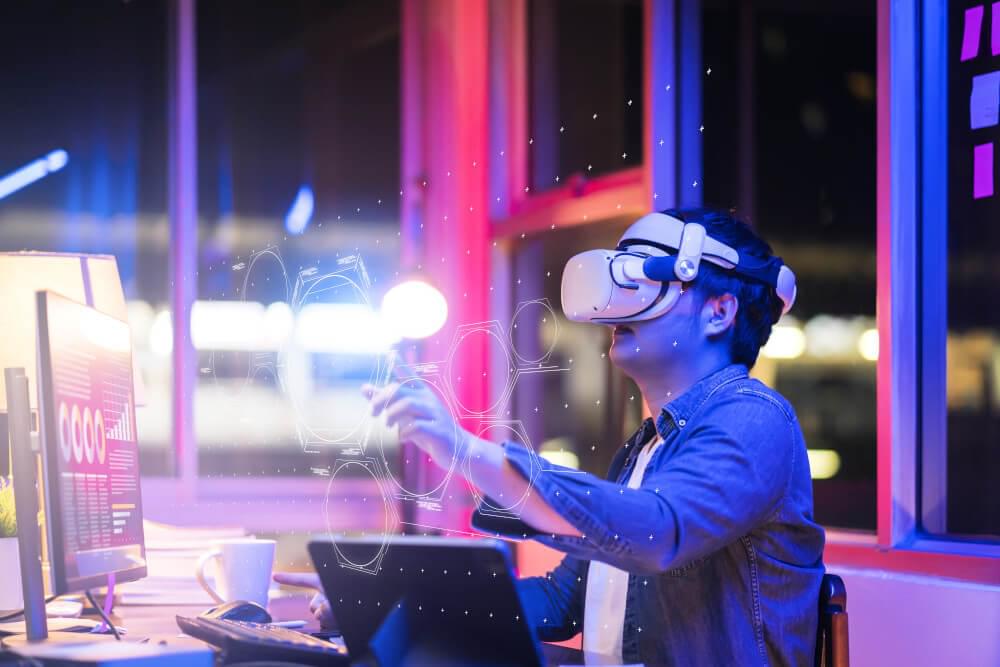voice technology tutorials
6 Best marketing trends to look out in 2023
At the speed the time is passing, it seems each month marketing trends are changing and evolving with the latest technologies available. But every year comes with transformations at magnificent scales and loads of responsibility for going with the flow.
You can no longer put off essential business tasks until another year because you have a tight budget, dislike change or updates, or hate social media to promote your products. Technology is backing up immense change in digital marketing course, and we expect to see many trends evolving in video marketing, voice search optimization, and the influencer market.
Let’s look into all marketing trends of 2023 that will be transforming our business to the next level.
1. Marketing Trends in Voice Technology 2023

Voice technology has been thriving for quite some time, but it’s only recently become a mainstream tool for marketers. With the rise of smart speakers and virtual assistants like Amazon Alexa, Google Home, and Apple Siri, more and more businesses are turning to voice technology to reach their customers. In fact, according to a recent study by PwC, almost half of all US consumers already use voice technology regularly.
As voice technology continues to evolve and become more sophisticated, marketers are looking for new ways to use this powerful tool.
- Voice search optimization: With the rise of smart speakers and voice assistants, businesses must ensure that their websites are optimized for voice search. We expect an increase in voice search optimization strategies focusing on long-tail keywords and natural language queries.
- Voice-based advertising: In 2023, we can expect more businesses to incorporate voice-based advertising into their marketing strategies. This could be sponsored voice assistant responses or interactive voice ads that engage customers in a new and exciting way. There are text-to-speech tools that can convert your catch copy content for ads into influencer voice to enhance the image of your brand and retention rate.
- Personalization: Voice technology offers a unique opportunity for businesses to personalize their marketing messages. Businesses can deliver targeted marketing messages that resonate with their audience by leveraging data on a customer’s previous interactions with voice assistants.
- Voice-based customer service: As voice technology improves, we can expect more businesses to incorporate voice-based customer service into their marketing strategies. This could be chatbots that respond to voice queries or virtual customer service representatives that can assist customers in real-time.
- Voice-based experiences: In 2023, we can expect more businesses to create voice-based experiences that engage customers in a new and exciting way. For example, a restaurant might create a voice-based game that allows customers to order food through a voice assistant.
- Integration with other technologies: Voice technology is not limited to voice assistants and smart speakers. In 2023, we can expect more businesses to incorporate voice technology into other technologies, such as wearables and smart home devices.
- One of the most exciting marketing trends in voice technology is the development of voice-activated ads. This type of advertising allows companies to target specific audiences with ads tailored to their interests and needs. For example, someone searching for information about a particular product or service might be targeted with an ad from that company. This type of targeted advertising can be highly effective as it can help companies reach potential customers who may not be aware of their products or services.
- Another exciting innovation in voice technology is the use of natural language processing (NLP). NLP is a form of artificial intelligence that enables machines to understand human language and respond accordingly. This means that marketers can use NLP to create personalized customer experiences based on what they say. For instance, if someone asks about a product or service, the machine can respond with relevant information and suggest other related products or services. This kind of personalized experience can be extremely helpful in improving customer engagement and increasing sales.
- Voice-enabled commerce is also becoming increasingly popular among businesses, allowing them to provide their customers with an easy and convenient shopping experience. Using voice commands, customers can quickly search for products, compare prices, and even purchase items without ever leaving their homes. As this technology continues to improve, it could revolutionize the way people shop online in the future.
- Another interesting development in voice technology is the emergence of conversational AI. Conversational AI uses natural language processing (NLP) to enable machines to understand conversations between humans and respond accordingly. Marketers could use this to create interactive experiences for their customers, allowing them to ask questions about products or services and get instant answers without waiting for a response from a customer service representative.
2. Marketing Trends in NFT 2023

NFTs, or non-fungible tokens, are becoming increasingly popular in the digital world, and their impact on the marketing landscape cannot be ignored. Here are some of the marketing trends we can expect to see in the NFT space in 2023:
- Brand collaborations: As more and more brands embrace NFTs, we can expect to see an increase in brand collaborations. Brands may partner with artists or creators to produce limited-edition NFTs that showcase their products or services.
- NFT-based loyalty programs: NFTs offers a unique way for businesses to reward customer loyalty. We can expect more businesses to create NFT-based loyalty programs that offer exclusive rewards and experiences to their most loyal customers.
- Gamification: NFTs offers an exciting opportunity to gamify marketing campaigns. By creating NFTs that can be earned through specific actions or challenges, businesses can engage their audience in a new and exciting way.
- Social media integration: Social media platforms like Twitter and Instagram are already exploring NFT integration. We expect more businesses to incorporate NFTs into their social media marketing strategies in 2023. By creating NFT-based campaigns, businesses can generate buzz and engage their audience on social media.
- Hybrid NFTs: In 2023, we expect more businesses to create hybrid NFTs combining physical and digital elements. For example, a fashion brand might create an NFT representing a limited-edition clothing item. The customer could then redeem the NFT for the physical product.
- NFT marketplaces: As NFTs continue to gain popularity, we can expect to see the rise of more NFT marketplaces. These marketplaces will offer businesses a new platform to sell and promote their NFTs to a wider audience.
NFTs offers a new and exciting way for businesses to connect with their audience and drive engagement. As more businesses embrace NFTs, we expect innovative marketing strategies incorporating these unique digital assets. From brand collaborations to gamification, the possibilities for NFT marketing trends are endless, and those businesses that embrace this trend will be well-positioned for success in future years.
3. Marketing Trends in Metaverse 2023
The Metaverse is rapidly evolving, and businesses are taking notice. It’s a virtual world that offers endless possibilities and has the potential to revolutionize the way brands market themselves. With the rise of virtual reality and augmented reality technologies, businesses can create immersive experiences for their customers and connect with them on a deeper level.

A. Virtual Events: Connecting with Customers in the Metaverse
Virtual events have become increasingly popular in recent years, and the Metaverse offers a new platform for businesses to connect with their customers. In the virtual world, businesses can create immersive experiences allowing customers to interact with their products and services in a way that was impossible before.
Virtual events can take many forms, from product launches to virtual conferences and trade shows. Businesses can leverage these events to build hype and anticipation for their products and services and deeply connect with customers. In the Metaverse, businesses can create a virtual booth that showcases their products and allows customers to interact with them in real time.
B. Augmented Reality Advertising: Engaging Customers in a New Way
Augmented reality (AR) advertising is one of the marketing trends gaining traction in the Metaverse. AR technology allows businesses to create interactive experiences that engage customers in a new way. With AR, businesses can create virtual try-on experiences for their products or showcase their products in a real-world setting.
AR advertising is not only engaging but also practical. Studies have shown that customers are more likely to purchase a product after experiencing it through AR. Businesses can leverage AR technology in the Metaverse to create immersive experiences that drive sales and build brand awareness.
C. Virtual Product Launches: Building Hype and Anticipation
Virtual product launches are one of the marketing trends gaining popularity in the Metaverse. In the virtual world, businesses can create a buzz around their product launches by creating immersive experiences that allow customers to interact with their products before they are released.
Virtual product launches can take many forms, from virtual reality product demos to interactive product showcases. By leveraging the Metaverse, businesses can build hype and anticipation for their products and create a sense of exclusivity around their brand.
D. Influencer Marketing in the Metaverse: Reaching a New Audience
Influencer marketing is not a new concept but has taken on a new form in the Metaverse. In the virtual world, businesses can partner with virtual influencers to promote their products and services to a new audience.
Virtual influencers are becoming increasingly popular in the Metaverse, and businesses can leverage their popularity to reach a new audience. Businesses can create engaging content that resonates with their target audience and drives sales by partnering with virtual influencers.
E. Customer Engagement in the Metaverse: Enhancing the Customer Experience
The Metaverse offers endless possibilities for businesses to enhance the customer experience. From virtual reality product demos to immersive brand experiences, businesses can leverage the Metaverse to create unforgettable customer experiences.
By enhancing the customer experience in the Metaverse, businesses can build brand loyalty and drive sales.
4. Video Marketing Trends Take Center Stage in 2023
As we move into 2023, video marketing trends are expected to take center stage as a key trend in the marketing industry. With the increasing popularity of video content and the growing importance of social media platforms, businesses are turning to video marketing to engage with their audience and build their brand.
- The Popularity of Short-form Video Content
- Live Streaming and Webinars
- Interactive Video Marketing
- Personalized Video Ads
One of the primary benefits of video marketing trends is that it allows businesses to create engaging and shareable content that can help to build brand awareness and drive customer engagement. Videos can be used to showcase a product or service, provide educational content, or tell a brand story more compellingly than traditional text-based content.
Another critical benefit of video marketing is that it is highly versatile and can be used across various platforms and channels. Videos can be shared on social media platforms, embedded on a website, used in email marketing campaigns, or displayed in-store or at events. This versatility allows businesses to reach a wider audience and increase their visibility across multiple channels.
- Live streaming is also becoming an increasingly popular trend in video marketing. Live streaming lets businesses connect with their audience in real-time, providing a more authentic and interactive experience. This can be used for product launches, Q&A sessions, or behind-the-scenes looks at a business’s operations.
- Personalization is another significant trend in video marketing. Businesses can create personalized video content tailored to individual customers’ interests and preferences with data and analytics. This can increase engagement and build a stronger connection with customers.
By creating engaging and versatile video content, businesses can build brand awareness, drive customer engagement, and increase their visibility across multiple channels. You can take the help of a free video editor to create high-quality video content. As the importance of social media platforms and online content continues to grow, businesses prioritizing video marketing will likely gain a competitive advantage and succeed in the digital marketplace.
Related: History of Audio Storytelling: From Radio to Podcasts
5. Sustainability and Purpose-Driven Marketing Trends in 2023
Sustainability and purpose-driven marketing are two important marketing trends to watch out for in 2023. With the increasing global awareness of climate change and the importance of social responsibility, consumers are becoming more conscious of the environmental and social impact of the products and services they buy.
As a result, businesses are expected to adopt more sustainable and purpose-driven marketing strategies to meet the changing needs of their customers.
- Consumer Demand for Sustainable Products and Brands
- Purpose-driven Marketing and Corporate Social Responsibility
- Green Marketing Strategies and Eco-friendly Packaging
- Transparency and Authenticity in Marketing
Sustainability in marketing involves creating eco-friendly products, reducing waste and carbon footprint, and promoting sustainable business practices. This can include using renewable energy, reducing packaging waste, and sourcing materials from sustainable suppliers. Consumers are increasingly looking for brands that prioritize sustainability, and businesses that can demonstrate a commitment to the environment are likely to gain a competitive edge.
On the other hand, purpose-driven marketing trends involve aligning a business’s values with its marketing efforts. This can involve supporting social causes, promoting diversity and inclusivity, or taking a stand on political or social issues. Purpose-driven marketing can help businesses build a strong brand identity, connect with their customers on a deeper level, and positively impact society.
To implement sustainable and purpose-driven marketing strategies, businesses must be transparent and authentic in their customer communication. This can involve sharing information about their sustainability efforts or social impact and being honest about their challenges and limitations. Consumers today are savvy and can easily detect green-washing or insincere marketing efforts, so businesses must be genuine in their commitment to sustainability and social responsibility.
6. Augmented Reality for Enhanced Customer Experience in 2023
Augmented reality (AR) is a technology that superimposes digital information onto the real world, creating an immersive user experience. In recent years, AR has become an increasingly popular tool for businesses to enhance customer experience.
As we move towards 2023, we expect more businesses to incorporate AR into their marketing strategies to provide a more engaging and interactive customer experience.
- AR-enhanced Product Visualization
- Virtual Try-ons and Product Demos
- Gamification and AR Marketing Campaigns
- Location-based AR Marketing
One of the primary benefits of AR is that it allows businesses to create a more personalized experience for their customers. With AR, businesses can create custom virtual experiences tailored to individual customers’ preferences and interests. For example, a furniture retailer could use AR to create a virtual showroom that allows customers to visualize different furniture pieces in their homes.
AR can also enhance the shopping experience by providing customers with more product information. For example, a fashion retailer could use AR to create virtual dressing rooms that allow customers to see how clothing items look without physically trying them on. AR can also give customers more engaging and interactively product information, such as reviews, specifications, and pricing.
AR can also be used to create immersive marketing campaigns that capture customers’ attention and drive engagement. For example, a food and beverage company could use AR to create a virtual cooking experience that allows customers to learn how to prepare a recipe while interacting with the brand’s products. An automotive company could use AR to create a virtual test drive experience that allows customers to see and experience the features of a vehicle more interactively.
Also, read: Tips on how to use audio marketing
FAQs:
Q: What is voice search optimization?
A: Voice search optimization refers to optimizing your website and content for voice search queries. With the rise of smart speakers and voice assistants, more and more people are using voice search to find information, products, and services.
Q: How can AI help with personalization?
A: AI-powered personalization can help businesses create hyper-personalized customer experiences by analyzing data and predicting customer behavior. AI can also power chatbots and voice assistants for personalized customer service.
Q: What is social commerce?
A: Social commerce refers to using social media platforms for buying and selling products and services. With social commerce, businesses can leverage their social media presence to drive sales and reach new customers.
Bottom-line:
Marketing trends 2023 is about embracing the latest technologies and understanding consumer behavior. From voice search optimization to augmented reality, businesses must adapt to these changes and create innovative marketing strategies to stay ahead of the competition. By embracing these trends, businesses can create more personalized customer experiences, improve their online presence, and drive more sales.









